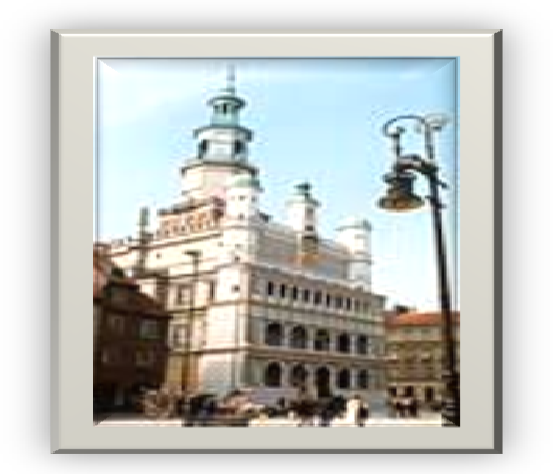Title of Product:
The Town Hall in Poznan as an example of the XIV Century Art
Country:
 Poland
Poland
Century: 1300 - The 14th Century
Topic: The Town Hall in Poznan as an example of the XIV Century Art
Image of the product:

Name of Author(s): Malgorzata Fugiel-Kuzminska
Name of Producer: Net periodic: “turysta.pl”
Language/s of Product: Polish
Target Group: General audience
Overall Evaluation: excellent
Availability of community:
Newsgroup
Objectives & Structure:
Aspects to consider:
- The website demonstrates the notion of the quality of reconstruction and the emergency’s point of view
- Analysis as regards the heritage taken back
- Town Halls’ architecture, decorated life in the cities(also high life motif throughout history)
- Possibility of setting up some practical instructions as regards the reconstructions’ necessities, and a step by step ordering the idea of the practical and decorative town hall
Description of contents:
The former place of the City Council belongs to the most precious monuments of the Renaissance monuments in the Middle Europe. It was built in XIV century. There witnesses about that e.g. a screwier with a crest of the Przemyslids. That dynasty was represented by Waclaw II- the Polish King in the years: 1300-1306. The gothic Town Hall was not too big, consisting of two levels, over which probably only in the XVI century there were erected a slender tower.
In the years 1550- 1567, the Town Hall was reconstructed by the Italian architect Giovanni Baptista Quadro from Lugano in the Renaissance style. The building was lengthened then towards west, the level was one floor higher, the roofs were covered by the attics, and the façade was adorned with the 3 levels loggia.
In 1675 the Town Hall was destroyed by a thunder. It was rebuilt in 1690, however in 1725 it was knocked down by the hurricane. The new, Classic Style helmet of the Tower with an eagle on the top was put only after the general renovation of the roof made by the Commission of the Good Order in the years 1781- 1784. One floor was built over during the following renovation in the years 1910-1913. In 1945, the Town Hall was seriously destroyed: the helmet of the tower collapsed, and the two upper floors were completely fired. The Town Janitor Jozef Jozwiak fortunately saved the most important objects from the insides set on fire. During the reconstruction lasting till 1954, there dismounted the upper level adjoined in the beginning of the XX century. The complex renovation started off in 1994.
Evaluation and Comments:
Overall Evaluation: excellent
Clarity of structure, logical sequence of contents: excellent
Usability / easiness of navigation: excellent
The website is interesting / stimulating: excellent
Educational and learning value: excellent
Quality and relevancy of content: excellent
Compatibility of the content with the target group: excellent
Suitability and quality of graphic interface: excellent
Degree and quality of interaction: excellent
Exploitation of the electronic potential: excellent
Availability and quality of simulation exercises: excellent
Quality of the evaluation tools: excellent
Possibility of printing/saving material or tests: excellent
Description of how the website can be used with the students::
- The website shows the precise timeline of the artefacts
Comments::
- The aspect of reconstruction and elaboration within the architecture’s heritage is demonstratively put forward
Evaluation Date: 01.09.2008
Name of teacher: Ewa Bajon
Name of School: Primary School number 8
Country: Poland
Subjects Taught: Fine Arts
Comments about this product

 Poland
Poland